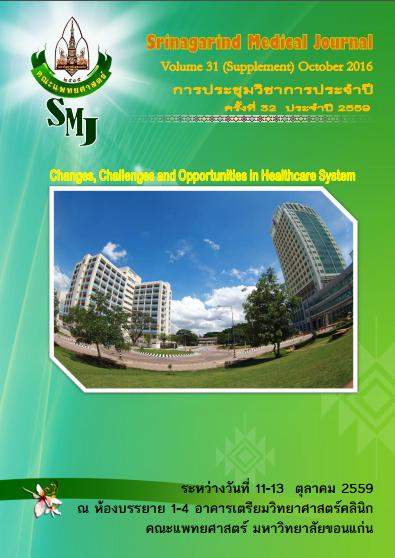The Comparative Study of Optimal Fresh Gas Flow Rate of the Parallel Pediatric ADE Breathing System in Mode a and Jackson-Rees Breathing System in Spontaneously Breathing Anaesthetized Pediatric Patients
Keywords:
Mapleson A breathing system, Jackson-Rees breathing system(JR), AD, System, breathing fresh gas flow, spontaneously breathing, pediatric patientsAbstract
Background and Objective : TheMapleson A breathing system is the most efficient breathing system in spontaneous breathing anaesthetized pediatric patients with economical use of gases and inhalation agent, less in operating room pollution, less respiratory complication but many anesthesiologists still use the Mapleson F or Jackson- Rees breathing system which is less efficient instead. The parallel pediatric ADE breathing system in mode Acan be functioned as the Mapleson A breathing system. In this study, we would like to compare efficiency of the parallel pediatric ADE breathing system in mode A with Jackson-Rees breathing system on fresh gas flow consumption.
Material and Method : This study was a randomized cross-over study. Twenty four patients,weighing 5 to 20 kg, with ASA physical status I-II and planned to undergo surgery sunder combined caudal anesthesia with general anesthesiawere enrolled. They were allocated into group I(ADE/A-JR) starting with the parallel pediatric ADE breathing system in mode A then switching to Jackson-Rees breathing system or group II(JR-ADE/A) in reversed order. After induction and intubation, anesthesia was maintained with 50% N20/O2 and Sevoflurane 1-3vol%. Fentanyl infusion (1mcg/ml) was titrated for proper respiratory rate. Starting with the first breathing system,all patients were spontaneously ventilated with lowest fresh gas flow that no rebreathing(ImCO2=0) occurred for 5 minutes and then fresh gas flow was gradually decreased by 0.5 LPM every five minutes. End-tidal CO2(EtCO2), inspired minimum CO2(ImCO2) , oxygen saturation(SpO2) and vital signs (SBP/DBP, HR, RR, BT) were recorded until rebreathing occurred(ImCO2 > 0 mmHg) and continued until rebreathing was out of clinically acceptable range(ImCO2 > 6 mmHg) then anesthesia breathing system was switching to the second breathing system and the study of the fresh gas flow was donein the same pattern.
Results : At no rebreathing, minimum fresh gas flow of the parallel pediatric ADE breathing system in mode A and Jackson-Rees breathing system were 296.95 ± 36.76 and 442.18 ± 47.05 ml/kg/min; p<0.001respectively. At clinically acceptable rebreathing, the value were142.81 ± 24.49 and 287.8 ± 49.12 ml/kg/min;p<0.001respectively.
Conclusion: The parallel pediatric ADE breathing system in mode A can be applied in anesthetic practice safely, economically and efficiently in spontaneously breathing anaesthetized pediatric patients weighing 5 – 20 kg.




